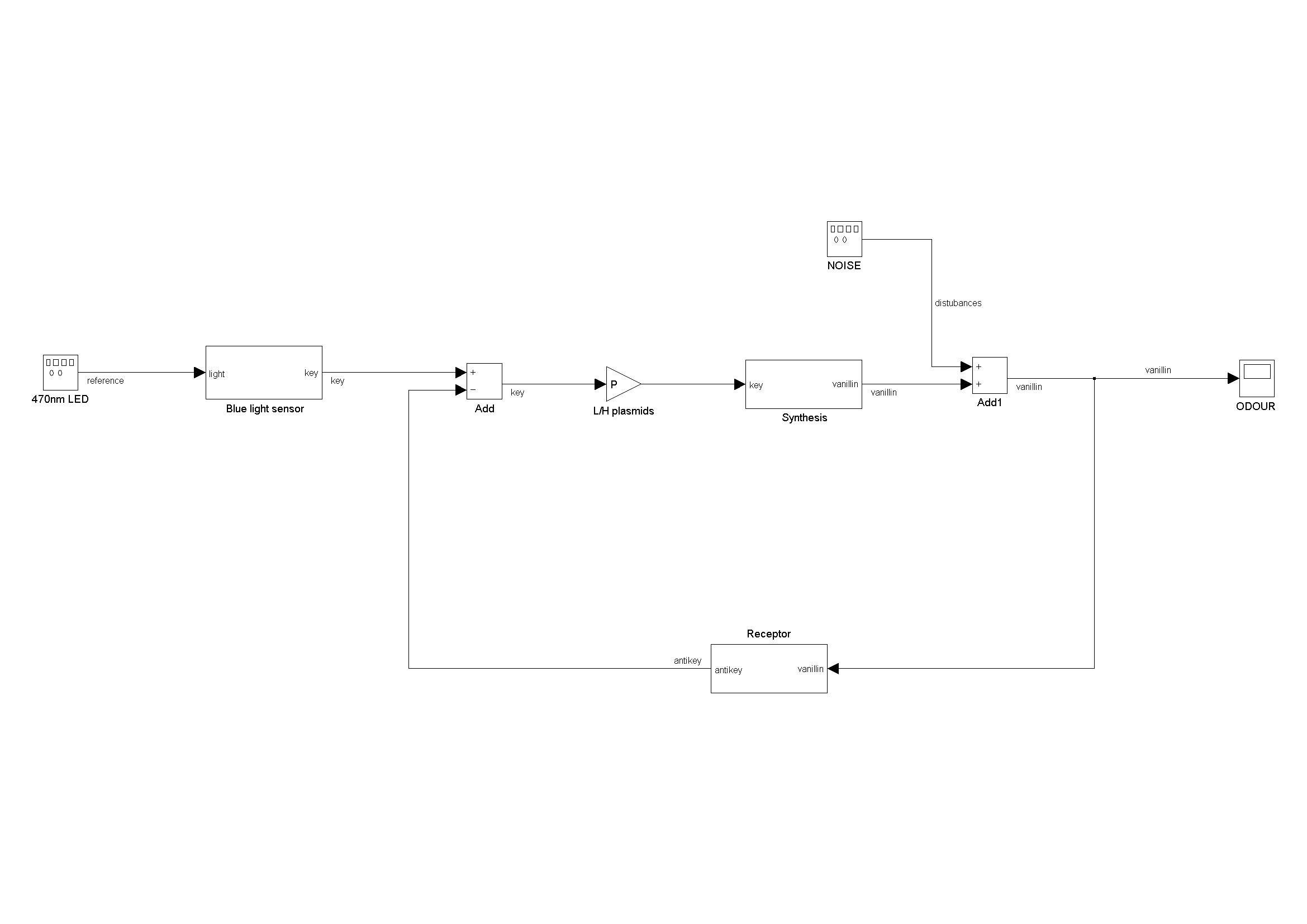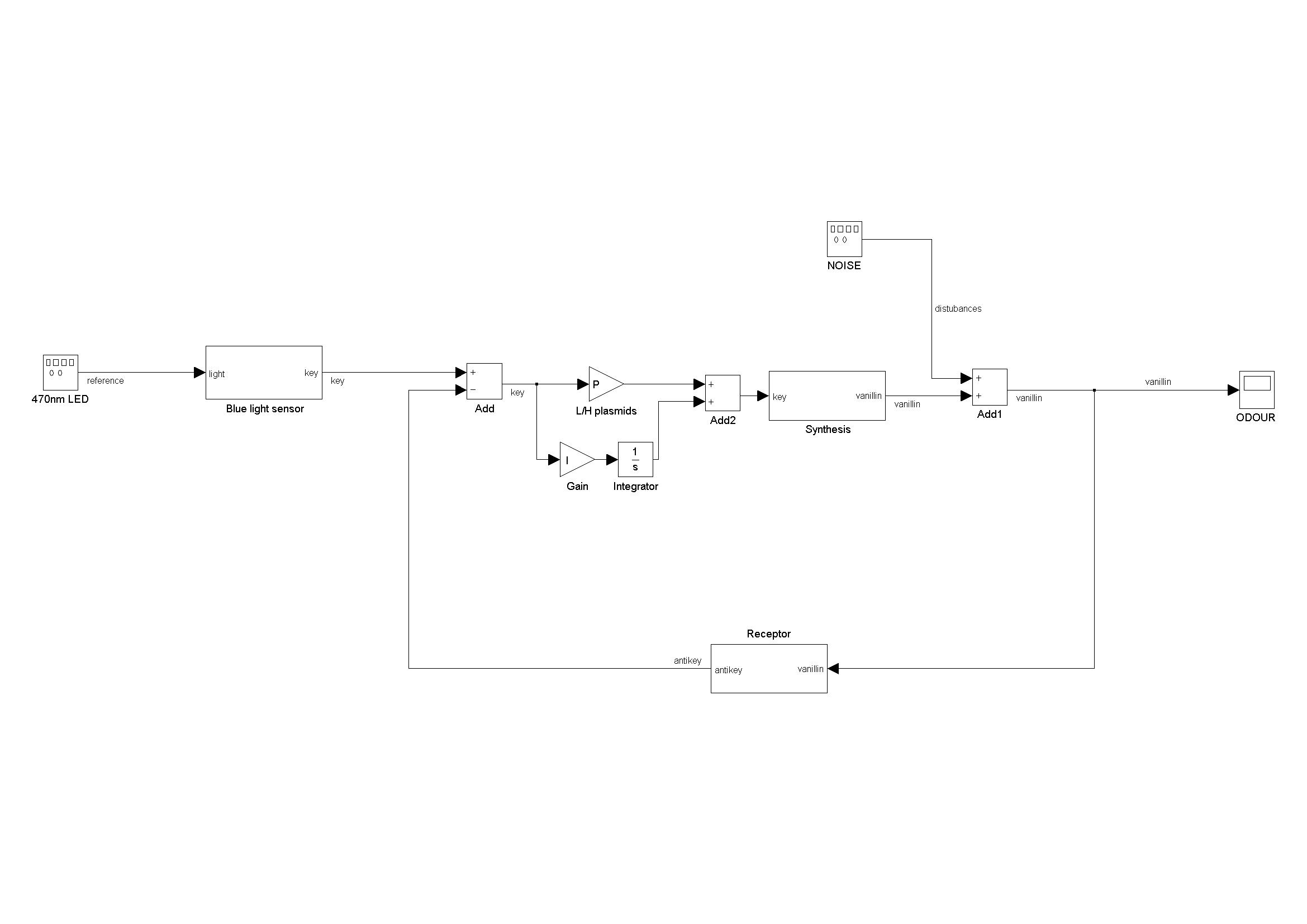Team:KULeuven/Design/Integrated Model
From 2009.igem.org
(→Control theory) |
(→Proportional design (P controller)) |
||
| (51 intermediate revisions not shown) | |||
| Line 1: | Line 1: | ||
{{Team:KULeuven/Common2/BeginHeader}} | {{Team:KULeuven/Common2/BeginHeader}} | ||
| - | {{Team:KULeuven/Common/ | + | {{Team:KULeuven/Common/SubMenu_Intergated_Model}} |
{{Team:KULeuven/Common2/EndHeader}} | {{Team:KULeuven/Common2/EndHeader}} | ||
__NOTOC__ | __NOTOC__ | ||
| - | = | + | =Controller design= |
| - | + | Because we want to optimize the design of the feedback loop in our system, we developed a more abstract block scheme of the bacterium. It shows each component as a block performing a specific task. The diagram is used to develop some theories about the performance of the feedback loop. | |
| - | + | ||
| - | + | ==Proportional design (P controller)== | |
| - | Because | + | Because the controller has to be implemented in 'biological technology', we choose the simplest possible design of |
| - | + | controller, the proportional controller. The output signal in this type of controller is directly proportional to the error signal. The error signal is the substraction of the input and the control signal. however this type of controller has one importent flaw. When the input is a step function, as in most cases, there will be a steady state error. To make this steady state error as small as possible, the gain in the feedback loop must be as large as possible. | |
| + | The gain in the feedback loop can be adjusted by using low/high copy plasmids for the genes in the loop. | ||
| - | [[Image: | + | [[Image:Proportional10.JPG|750px|center|thumb|Block model of the system with proportional controller (Simulink)]] |
| - | = | + | ==Proportional and Integral design (PI controller)== |
| - | + | Because the steady state error on a step input signal will always be nonzero without an integrator, we considered to add some integral action, in the form of an proportional and integral controller. The input of the controlled system is, in this type of controller, a weighted sum of the error and the integral of that error signal. This way the staedy state error is avoided. However because of the limited amount of time and resources we stayed with the P controller design, which is more straightforward to implement in a biological systems.<br> | |
| - | + | As an extention the integrator could be implemented in the cell by producing a species with a rate proportional to the amount of mRNA key. | |
| - | + | [[Image:PI.JPG|750px|center|thumb|Block model of the system with proportional controller (Simulink)]] | |
{{Team:KULeuven/Common2/PageFooter}} | {{Team:KULeuven/Common2/PageFooter}} | ||
Latest revision as of 19:06, 13 October 2009
Controller design
Because we want to optimize the design of the feedback loop in our system, we developed a more abstract block scheme of the bacterium. It shows each component as a block performing a specific task. The diagram is used to develop some theories about the performance of the feedback loop.
Proportional design (P controller)
Because the controller has to be implemented in 'biological technology', we choose the simplest possible design of controller, the proportional controller. The output signal in this type of controller is directly proportional to the error signal. The error signal is the substraction of the input and the control signal. however this type of controller has one importent flaw. When the input is a step function, as in most cases, there will be a steady state error. To make this steady state error as small as possible, the gain in the feedback loop must be as large as possible. The gain in the feedback loop can be adjusted by using low/high copy plasmids for the genes in the loop.
Proportional and Integral design (PI controller)
Because the steady state error on a step input signal will always be nonzero without an integrator, we considered to add some integral action, in the form of an proportional and integral controller. The input of the controlled system is, in this type of controller, a weighted sum of the error and the integral of that error signal. This way the staedy state error is avoided. However because of the limited amount of time and resources we stayed with the P controller design, which is more straightforward to implement in a biological systems.
As an extention the integrator could be implemented in the cell by producing a species with a rate proportional to the amount of mRNA key.
 "
"









